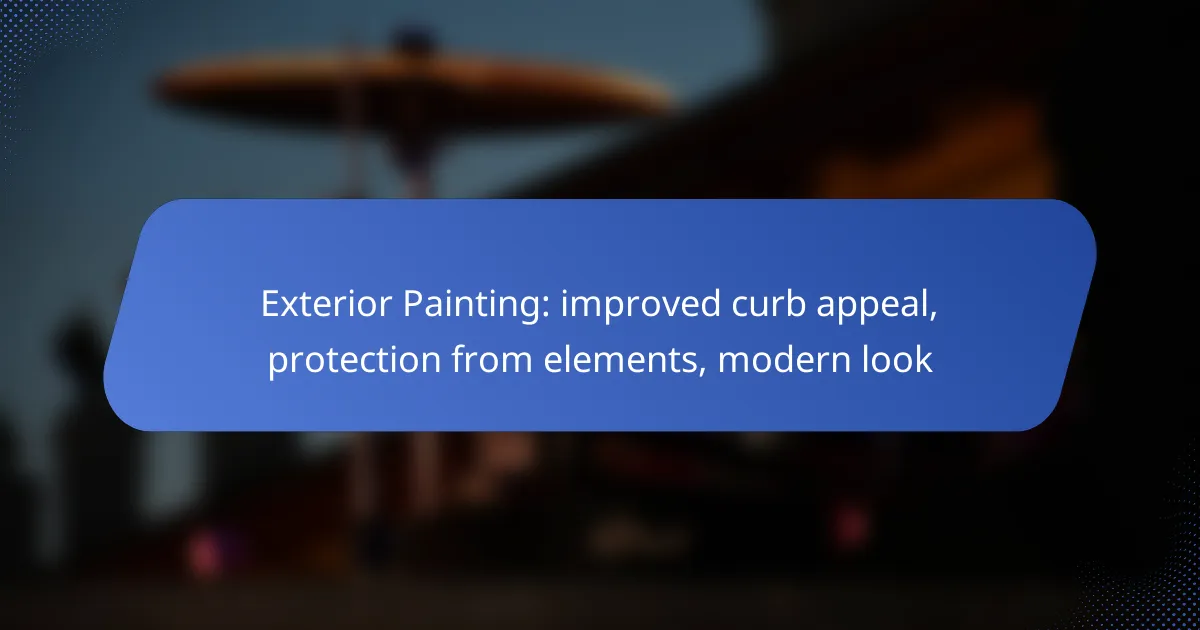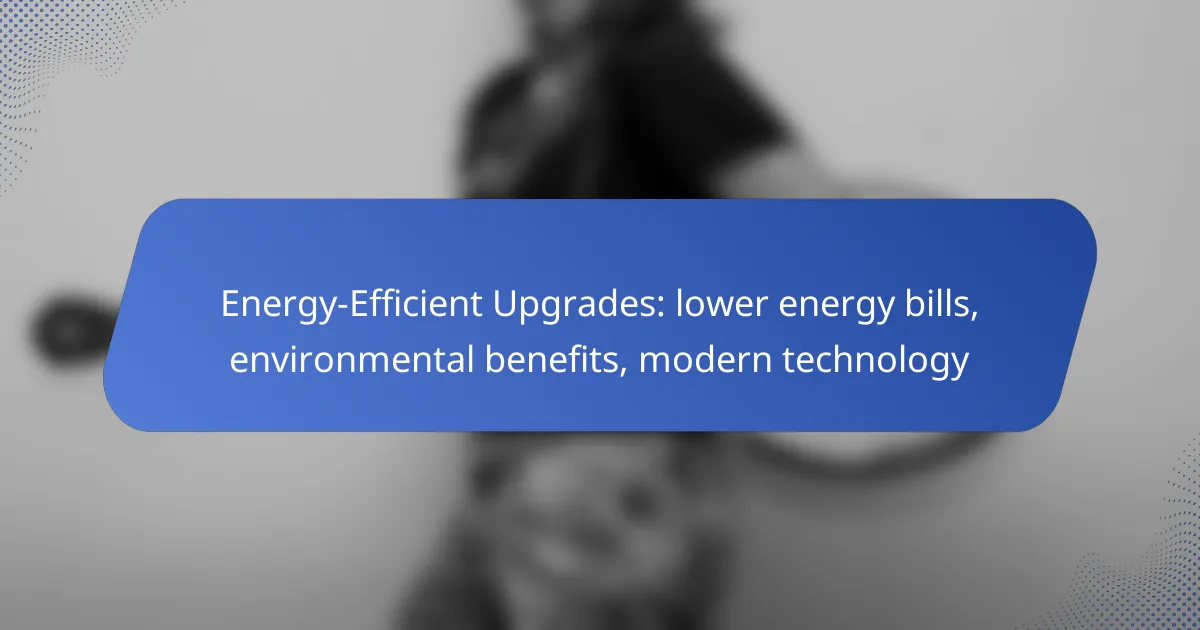Exterior painting is a powerful way to boost curb appeal, making your property more attractive and inviting. Beyond aesthetics, it provides essential protection against environmental elements, ensuring the longevity and integrity of your home. With a range of modern, eco-friendly paint options available, you can achieve a stylish look while safeguarding your investment.

How does exterior painting improve curb appeal in London?
Exterior painting significantly enhances curb appeal in London by refreshing the visual appearance of a property and making it more inviting. A well-executed paint job can attract potential buyers and create a positive first impression in a competitive real estate market.
Enhanced colour schemes
Choosing the right colour scheme can dramatically elevate the look of a home. In London, popular choices often include classic neutrals or bold accents that reflect the local architecture. A fresh coat of paint in appealing colours can make a property stand out in a street lined with similar homes.
Consider using a combination of complementary colours for trim and doors to add depth and interest. For example, pairing a soft grey with a vibrant blue front door can create a striking visual contrast that draws attention.
Updated architectural styles
Exterior painting allows homeowners to modernize the appearance of their property while respecting its architectural style. In London, many homes feature Victorian or Georgian designs that can be enhanced with contemporary colour choices. This balance of old and new can attract buyers looking for character and modern aesthetics.
When updating the exterior, consider the historical context of the property. Using historically accurate colours can preserve the charm while still giving it a fresh look. Researching local guidelines or consulting with a professional can ensure compliance with any regulations.
Increased property value
Investing in exterior painting can lead to an increase in property value, often yielding a return on investment. In London, a well-maintained facade can boost market appeal and potentially increase sale prices by several percentage points. This is particularly relevant in areas where curb appeal is a significant factor for buyers.
To maximize value, ensure that the paint used is durable and suitable for the local climate. High-quality exterior paints can withstand London’s variable weather, reducing the need for frequent repainting and maintenance. Regular upkeep of the exterior can also prevent more costly repairs down the line, further enhancing property value.
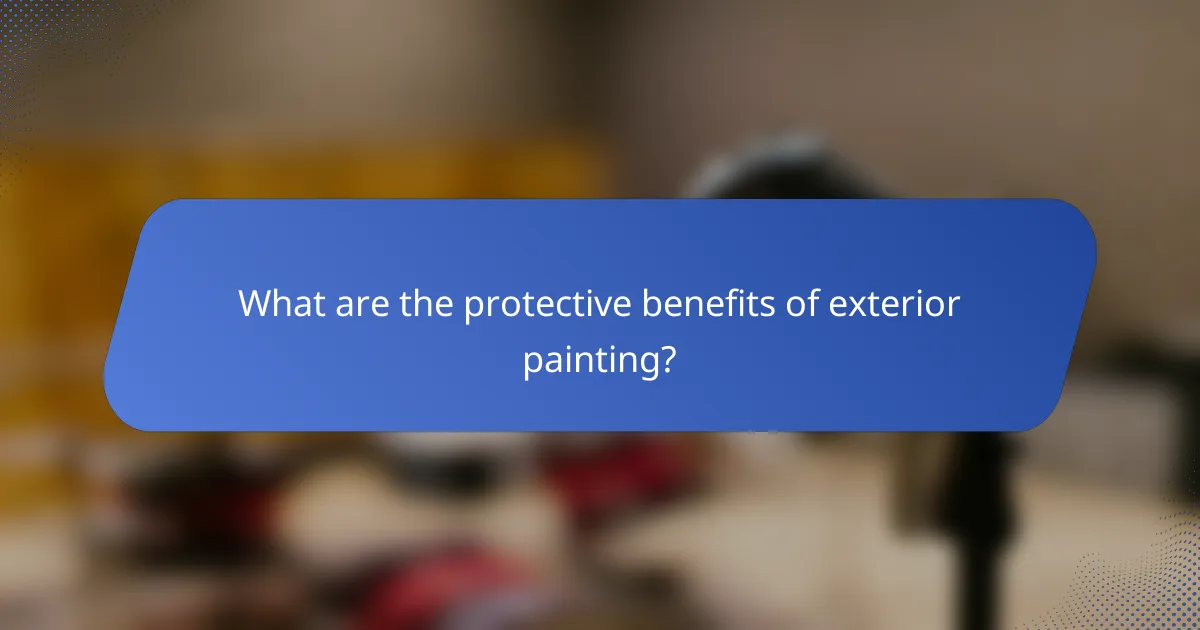
What are the protective benefits of exterior painting?
Exterior painting offers essential protective benefits by safeguarding structures from environmental damage and enhancing their aesthetic appeal. A well-applied coat of paint not only improves curb appeal but also acts as a barrier against various elements that can compromise the integrity of a building.
Shield against weather damage
Exterior paint serves as a protective layer against harsh weather conditions such as rain, snow, and UV rays. High-quality paints are formulated to withstand moisture and temperature fluctuations, preventing issues like peeling, cracking, and blistering.
When selecting paint, consider options with weather-resistant properties, especially in regions prone to extreme weather. Regular maintenance, including touch-ups, can further enhance this protective function.
Prevention of mold and mildew
Exterior painting helps prevent the growth of mold and mildew, which thrive in damp environments. Paints containing mildewcides can inhibit the development of these fungi, protecting both the appearance and health of your home.
To maximize protection, ensure surfaces are clean and dry before painting. Regular inspections and maintenance can help identify early signs of mold, allowing for timely intervention.
Extended lifespan of building materials
Applying exterior paint can significantly extend the lifespan of building materials by providing a barrier against moisture and other damaging elements. Wood, for example, is particularly susceptible to rot and decay, but a good paint job can help preserve its integrity for many years.
Consider using high-quality, durable paints and follow recommended application techniques to ensure optimal protection. Regular maintenance, including repainting every few years, can further enhance the longevity of your building materials.
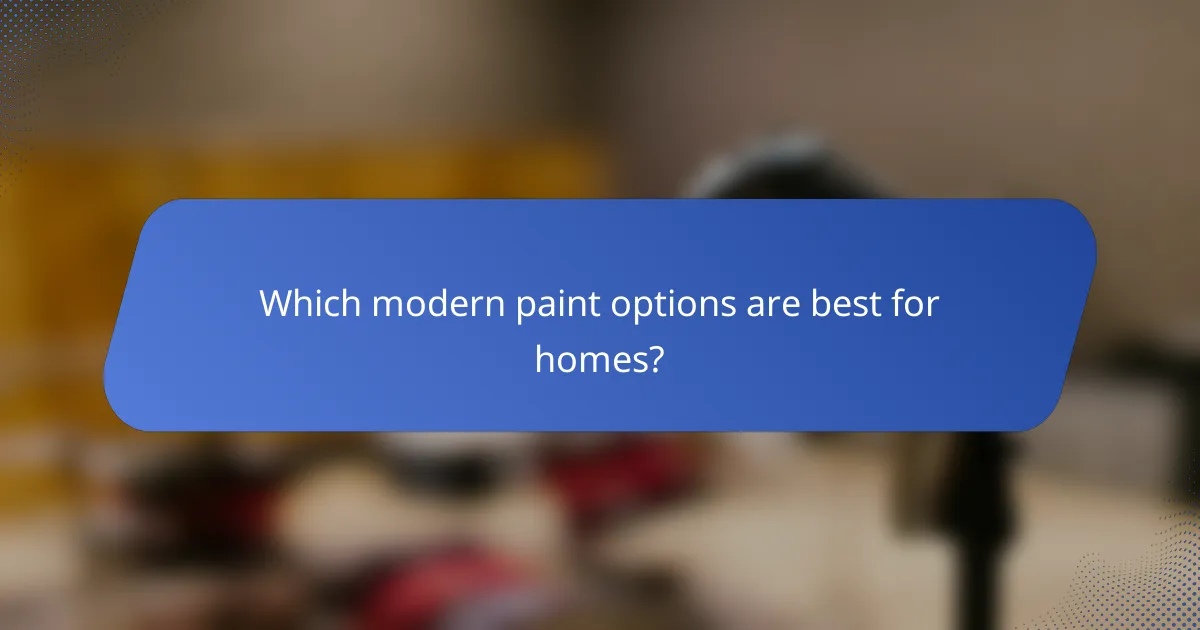
Which modern paint options are best for homes?
Modern paint options for homes include a variety of eco-friendly, durable, and stylish choices that enhance curb appeal while providing protection from the elements. When selecting paint, consider factors such as longevity, environmental impact, and current design trends.
Eco-friendly paint brands
Eco-friendly paint brands focus on reducing harmful emissions and using sustainable materials. Brands like Benjamin Moore, Sherwin-Williams, and Behr offer low-VOC (volatile organic compounds) options that are safer for both the environment and indoor air quality.
When choosing eco-friendly paints, look for certifications such as Green Seal or the EPA’s Safer Choice label. These certifications ensure that the products meet strict environmental standards, making them a responsible choice for your home.
Durable exterior finishes
Durable exterior finishes are essential for protecting your home from harsh weather conditions. Acrylic latex paints are popular for their flexibility and resistance to cracking, while elastomeric coatings provide a waterproof barrier that can withstand extreme temperatures.
Consider finishes like satin or semi-gloss for added durability and ease of cleaning. These finishes not only resist fading but also help repel dirt and moisture, extending the life of your paint job.
Trendy colour palettes
Trendy colour palettes can significantly enhance your home’s curb appeal. Current trends include earthy tones like warm greys, soft greens, and muted blues, which create a modern yet inviting look. Pairing these colours with crisp white trim can add a fresh contrast.
When selecting a colour palette, consider the architectural style of your home and the surrounding landscape. Use online visualizers or paint samples to test how colours look in different lighting conditions before making a final decision.

What factors should be considered before painting?
Before painting the exterior of a property, it’s essential to consider factors such as surface condition, climate, and contractor selection. These elements significantly influence the quality of the finish and the longevity of the paint job.
Surface preparation requirements
Proper surface preparation is crucial for a successful paint job. This includes cleaning the surface to remove dirt, mildew, and old paint, as well as repairing any damage like cracks or peeling. A well-prepared surface ensures better adhesion and a smoother finish.
Common preparation steps involve power washing, sanding rough areas, and applying a primer if necessary. Depending on the surface material, such as wood, brick, or stucco, specific preparation techniques may vary, so it’s important to follow best practices for each type.
Climate considerations in the UK
The UK climate can be quite variable, which impacts exterior painting projects. It’s advisable to avoid painting during periods of rain, high humidity, or extreme temperatures, as these conditions can affect paint adhesion and drying times. Ideally, aim for dry days with temperatures between 10°C and 20°C.
Additionally, consider the seasonal changes; late spring and early autumn often provide the most favorable conditions for exterior painting. Monitoring the weather forecast can help in planning the best time for your project.
Choosing the right contractor
Selecting a qualified contractor is vital for achieving a high-quality exterior paint job. Look for professionals with experience in residential painting, positive customer reviews, and proper licensing and insurance. Requesting quotes from multiple contractors can help you compare prices and services.
Ensure the contractor provides a detailed plan that includes surface preparation, paint types, and a timeline. Clear communication about your expectations and any warranties offered can also help avoid misunderstandings during the project.
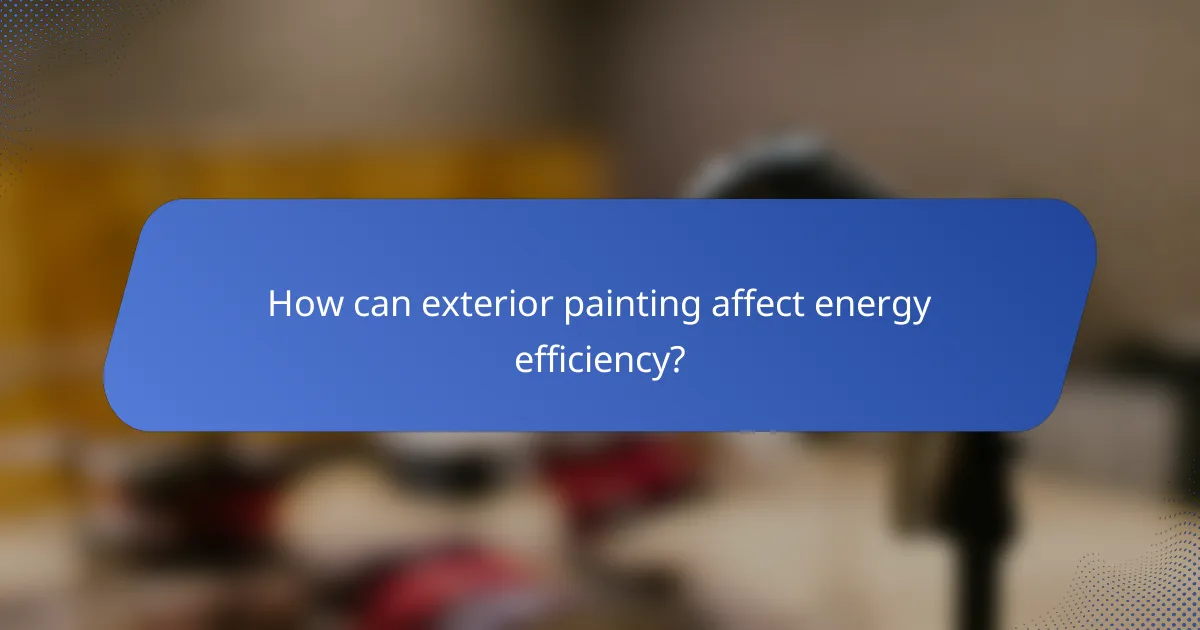
How can exterior painting affect energy efficiency?
Exterior painting can significantly enhance energy efficiency by improving insulation and reflecting sunlight. By choosing the right paint colors and materials, homeowners can reduce energy consumption for heating and cooling.
Reflective paint options
Reflective paint options are designed to bounce sunlight away from the building, keeping interiors cooler. Light colors, especially whites and pastels, are typically more reflective than darker shades. Homeowners should consider paints labeled as “cool roof” or “energy-efficient” for optimal performance.
These reflective paints can reduce heat absorption, which is particularly beneficial in warmer climates. Many manufacturers provide specific reflectivity ratings, allowing consumers to make informed choices based on their local weather conditions.
Insulation benefits
High-quality exterior paint can enhance the insulation properties of a home. Certain paints contain additives that improve thermal resistance, helping to maintain a stable indoor temperature. This can be especially useful in regions with extreme temperature fluctuations.
When combined with proper insulation materials, these paints can create a more energy-efficient envelope for the home. Homeowners should consult with professionals to determine the best paint options that complement their existing insulation systems.
Impact on heating and cooling costs
Using energy-efficient exterior paint can lead to noticeable reductions in heating and cooling costs. Homeowners may experience savings of 10-20% on their energy bills, depending on the climate and the quality of the paint used. This can result in a quicker return on investment over time.
To maximize these savings, it is essential to choose the right colors and types of paint that suit the local climate. Regular maintenance and repainting when necessary will ensure that the energy efficiency benefits are sustained over the years.
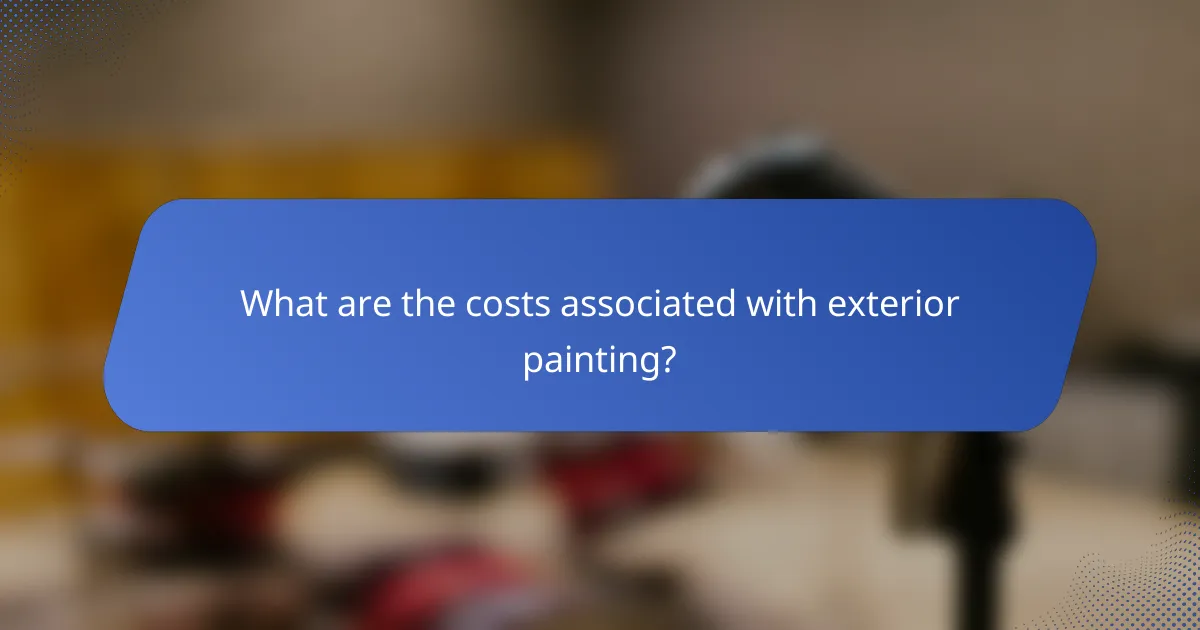
What are the costs associated with exterior painting?
The costs associated with exterior painting can vary widely based on several factors, including the size of the property, the quality of materials used, and labor expenses. On average, homeowners should expect to spend anywhere from a few hundred to several thousand dollars for a complete exterior paint job.
Average pricing in London
In London, the average cost for exterior painting typically ranges from £1,500 to £3,500 for a standard-sized home. Factors such as the type of paint, the condition of the surfaces, and the complexity of the job can influence this price. Larger properties or those requiring extensive prep work may see costs exceeding £5,000.
Factors influencing cost
Several factors can influence the overall cost of exterior painting. The size of the home is a primary determinant, as larger areas require more paint and labor. Additionally, the type of paint chosen can significantly affect pricing; high-quality or specialty paints often come at a premium.
Other considerations include the condition of the existing surfaces, which may require repairs or additional preparation, and the complexity of the architecture. Homes with intricate designs or multiple stories may incur higher labor costs due to the increased difficulty of the job.
Cost-saving tips
To save on exterior painting costs, consider doing some of the preparatory work yourself, such as cleaning or scraping old paint. This can reduce labor expenses significantly. Additionally, purchasing paint in bulk or during sales can lead to substantial savings.
Another effective strategy is to schedule the painting during off-peak seasons, such as late fall or early spring, when contractors may offer discounts. Always obtain multiple quotes from different contractors to ensure you are getting a competitive price.






